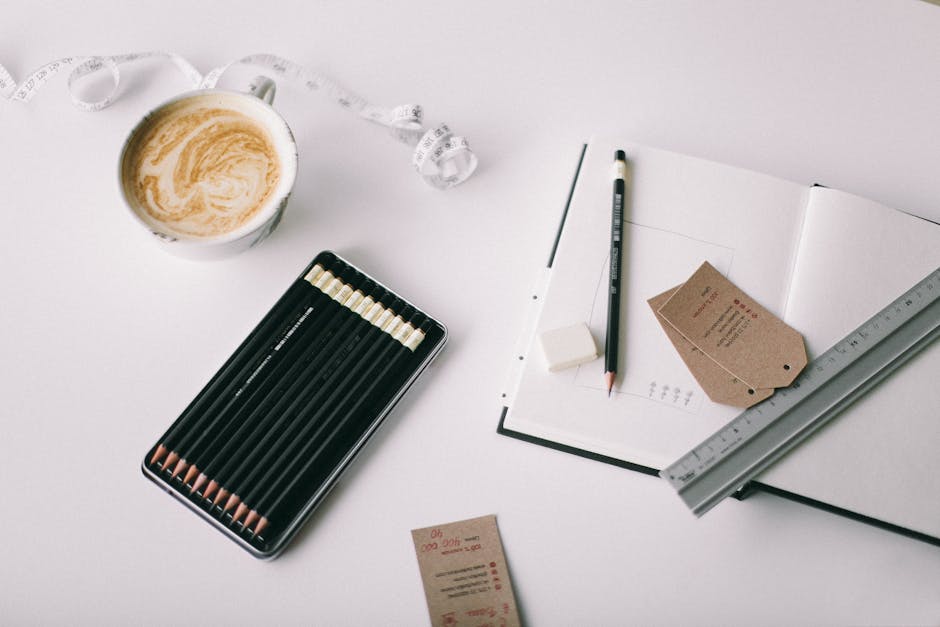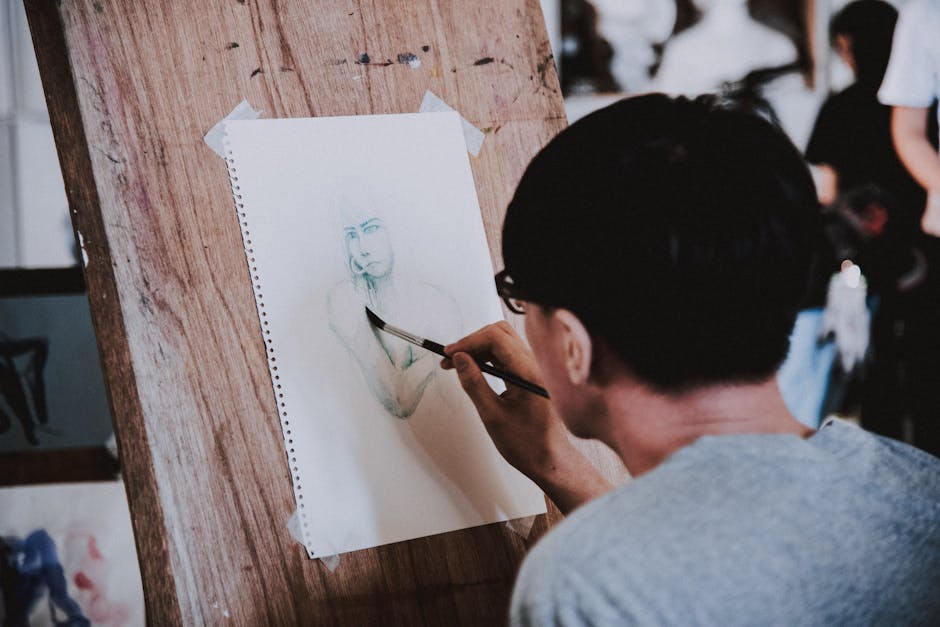Understanding the Grid Method
Dividing an image into a grid helps artists replicate it with accuracy, focusing on minute sections rather than overwhelming details. Starting with a ruler and a reference photo, draw a grid over the image first. Each square on the reference corresponds to an equally-sized square on the drawing surface. Small marks at every measurement, connected by straight lines, create perfect squares.
When transferring, notice only that square. Focusing on each small section ensures precision. Curved lines, angles, shadows, and highlights should each be carefully copied. Draw what you see, not what you believe is there. As each piece falls into place, the whole image forms.
The grid method isn't just for professionals. For students who struggle, isolating squares can simplify the task, strengthening their observation skills and boosting confidence.
The grid method has limitations. Students may grow too dependent. Focusing only on replication might stifle creativity and the ability to draw freehand. Balancing grid work with free sketching is key. Detailed subjects take time, testing patience and persistence.
Whether it's beginners conquering the basics or seasoned artists perfecting realism, the grid method remains an invaluable tool. It merges tradition with skill, transforming a formidable task into a masterpiece in the making.

Drawing Proportional Grids
Creating proportional grids is about maintaining harmony between your reference and your drawing surface. Begin by determining the dimensions of your reference image. Let's say it's an 8-inch by 10-inch photo. Now, decide the size of your artwork. If you wish to expand it to 16 inches by 20 inches, each inch on the reference photo should equate to two inches on your drawing paper.
Lay your ruler along the edges of the photo and mark every inch. Extend these marks into straight lines, creating a grid pattern. On your drawing surface, repeat the process, but adjust the scale proportionally. For our example, each mark would be every two inches. Count the squares to ensure an equal number horizontally and vertically on both the photo and the canvas.
If your grids aren't proportionate, your drawing could end up distorted. The transfer stage is like decoding a treasure map, with squares guiding you to replicate exact shapes. Patience is key, as misjudgment can throw off the entire piece.
For students, proportional grids reinforce mathematical precision alongside artistic flair, teaching spatial awareness and translating to a greater understanding of the world around them.
Remember, while grids foster structure, don't lock yourself in. Encourage students to balance grid practice with freehand drawing to nurture both precision and imagination. With practice, using proportional grids becomes second nature, enhancing every creation.
Transferring Images Using Grids
Image transfer using grids is an exercise in mindfulness, where drawing becomes a dance between observation and execution. Imagine staring at a single square on your grid — this will be your focus for the next few moments. Resist the urge to conjure the whole picture, and focus solely on this fragment.
Start by paying close attention to the contours within the square. Capture lines and curves precisely as they appear. Every shape, intersection of lines, or shade is a piece of a bigger puzzle. Your challenge is to replicate these details faithfully.
As you progress, resist the temptation to infer what lies ahead based on partial images. True skill in grid drawing surfaces when you train your eye to capture what's actually there, rather than what your brain anticipates.
Each completed section acts like a snapshot. Line by line, shade by shade, square by square, you're carefully rebuilding an intricate mosaic, stepping back only occasionally to witness the emerging coherence.
Young artists often experience significant growth through this method. Isolating each section can be especially beneficial for those struggling with proportion or spatial awareness. It's a practice in presence, honing their ability to see beyond the obvious.
Your dedication to each square gradually results in a flawless, organic recreation. The technique subtly forces you not just to see, but to truly observe—an invaluable skill in all creative efforts.

Troubleshooting Common Challenges
It's natural to hit a few bumps on the creative road, especially for beginners. Spatial awareness challenges can seem daunting, but there are techniques to help keep you on track.
A viewfinder can be a trusty sidekick. Using two L-shaped pieces of paper to mask off all but one square of your grid narrows your focus, making the task less intimidating and helping you hone in on delicate details.
Turning the reference image and your drawing upside down can be a game-changer. It forces you to see the subject as pure shapes and lines rather than recognizable objects, demanding fresh, precise observation.
If you notice the grid becoming more of a shackle than a scaffold, it might be time to ease away gradually. Start with larger grids, progressively removing some lines until you're initializing shapes without them, allowing more creative liberty while still anchoring proportion.
For spatial awareness troubles, practice with classic techniques like gesture drawing — quick, loose sketches that capture the essence of the subject. These spontaneous drawings sharpen your instinctual sense of space and proportion.
It's okay to switch techniques mid-way. If one square feels insurmountable, take a step back and maybe try a contour drawing approach within the grid. Let your pencil glide along the outline without lifting it, feeling the edge of what you're drawing.
Covering portions of your drawing and reference image, bit by bit, can prevent the mind from distorting proportions influenced by completed fragments. It's visual discipline — focusing solely on what's visible in the moment.
With creative troubleshooting, these methods can turn initial stumbling blocks into stepping stones. Embrace each challenge as an opportunity to refine your skills and deepen your observation.
Balancing Grids with Creative Freedom
Blending the grid technique with freehand drawing fosters both precision and imaginative freedom. The goal is to lighten the grip of the grid method gradually, encouraging artists to trust and develop their innate drawing skills.
Start by increasing the size of the grid squares over time. Expanding the grid forces your mind to bridge greater gaps with fewer visual cues, encouraging a leap from micro-management to macro-perception.
Experiment with partial grids. Instead of covering your entire reference with a grid, mark only specific points of intersection or critical lines. This partial scaffolding offers enough structure for navigating proportion while allowing freedom to extrapolate and interpret details.
Integrate blind contour drawing into your routine. Place your reference image aside, fix your gaze on it, and let your hand glide over the drawing surface without looking down. This approach tunes your visual dexterity and intuition, crucial skills that free you from rigid grids.
Frequent practice sessions with gesture drawing bring invaluable spontaneity to your art. These quick, fluid sketches aim to capture the essence of a subject rather than its exacting detail. They sharpen your instinctual grasp of movement and form.
Try memory drawing exercises as well. Gaze at a scene or an object for a minute, then turn away and sketch what you remember. This refines your observational acuity and bridges the gap between grid precision and the fluidity of freehand drawing.
Another powerful technique is the use of divergent grids with evolving complexity. Start with a simple grid layout, then introduce irregular patterns or even circular grids. This unpredictability forces your drawing process to adapt, nudging you from the comfort zone of squares into a dynamic range of shapes and angles.
Don't shy away from switching mediums or settings. Drawing from life transports you beyond photographic stillness and into the vibrant spontaneity of real-world observation. Live environments challenge you with shifting light, movement, and perspective.
While grids serve as a tool for sculpting precision, the heart of artistry beats strongest in freedom. Allow these methods to dismantle grid dependency bit by bit, empowering you to explore, invent, and infuse your creativity into the world with confidence.
Using grids in your artwork can be a valuable technique for both beginners and experienced artists looking to refine their skills. It helps transform challenging tasks into achievable steps, leading you closer to creating your masterpiece one square at a time.
In summary, the grid method offers several key benefits:
- Enhances accuracy and precision in drawing
- Breaks down complex images into manageable sections
- Strengthens observational skills and attention to detail
- Boosts confidence in beginners by simplifying the drawing process
- Serves as a valuable tool for artists of all skill levels
However, it's essential to remember that the grid method is just one tool in an artist's arsenal. To truly grow and develop your skills, it's crucial to balance grid work with freehand drawing and other techniques that encourage creativity and spontaneity.
So, embrace the grid method as a stepping stone on your artistic journey, but don't be afraid to step outside the lines and let your imagination soar. With dedication, patience, and a willingness to experiment, you'll be well on your way to creating masterpieces that capture the essence of your unique artistic vision.
- Chamberlain R, McManus IC, Brunswick N, Rankin Q, Riley H, Kanai R. Drawing on the right side of the brain: a voxel-based morphometry analysis of observational drawing. Neuroimage. 2014;96:167-173.
- Cohen DJ, Bennett S. Why can't most people draw what they see? J Exp Psychol Hum Percept Perform. 1997;23(3):609-621.
- Edwards B. The New Drawing on the Right Side of the Brain. New York, NY: Penguin Putnam Inc.; 1999.
- Chamberlain R, McManus IC, Riley H, Rankin Q, Brunswick N. Local processing enhancements associated with superior observational drawing are due to enhanced perceptual functioning, not weak central coherence. Q J Exp Psychol (Hove). 2013;66(7):1448-1466.
























